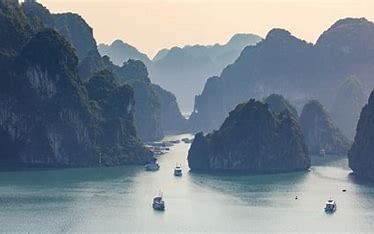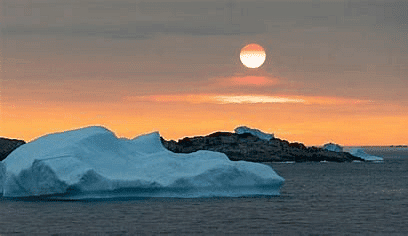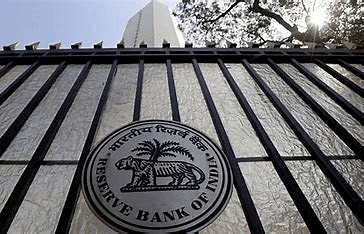UPSC Daily Current Affairs- 20th March 2024 | Current Affairs & Hindu Analysis: Daily, Weekly & Monthly PDF Download
GS-I
GULF OF TONKIN
Subject: Geography

Why in News?
Vietnam has requested China to honor the Gulf of Tonkin delimitation agreement.
Background
- The Gulf of Tonkin delimitation agreement, established in 2000, defines the borders of territorial seas, exclusive economic zones, and continental shelves in the Gulf of Tonkin.
About GULF OF TONKIN
- The Gulf of Tonkin, historically characterized by harmonious relations between Vietnam and China, is now witnessing a new maritime dispute due to China's independent expansion of territorial limits.
- Located in the northwestern region of the South China Sea, the Gulf of Tonkin is positioned off the shores of Tonkin (northern Vietnam) and South China.
- This gulf acts as a crucial water passage linking the South China Sea to the Beibu Gulf, which is referred to as the Gulf of Tonkin in Vietnam.
Source: Times Of India
Battle of Okinawa
Subject: History

Why in News?
The United States recently returned twenty-two historic artifacts to Japan that were taken following the Battle of Okinawa during World War II.
About Battle of Okinawa:
- The battle of Okinawa (April 1–June 21, 1945) was the last major battle of World War II. It was fought between U.S. and Japanese forces at Okinawa.
- Okinawa is the largest of the Ryukyus Islands and lies 350 miles from mainland Japan. The Americans wanted control of Okinawa because it had four airfields and could support tactical and strategic air operations.
- Code named Operation Iceberg, the invasion of Okinawa and other islands in the Ryukyus began on April 1, 1945. The immense size of the invasion forces made it the largest amphibious assault in the Pacific War.The United States secured Okinawa on June 22, 1945.
- The enormous casualties and the brutal fighting that occurred on Okinawa forced military planners to reconsider the invasion of Japan. It directly influenced the American decision to use atomic bombs on Hiroshima and Nagasaki.
Source: Hindustan Times
GS-II
European Union’s Artificial Intelligence Act
Subject: International Relations

Why in News?
Lawmakers in the European Parliament recently voted overwhelmingly in favour of the Artificial Intelligence Act.
About European Union’s Artificial Intelligence Act:
- It is the world’s first comprehensive Artificial Intelligence law. It lays down rules and guidelines for specific risks associated with the use of AI in areas like biometric authentication, facial recognition, high-risk domains such as healthcare, and deep fakes.
- Taking a horizontal, risk-based approach that will apply across sectors of AI development, the EU AI Act classifies the technology into four categories: Prohibited, high-risk, limited-risk, and minimal-risk.
- Systems that violate or threaten human rights through, for example, social scoring—creating “risk” profiles of people based on “desirable” or “undesirable” behaviour — or mass surveillance are banned outright.
- High-risk systems, which have a significant impact on people’s lives and rights, such as those used for biometric identification or in education, health, and law enforcement, will have to meet strict requirements, including human oversight and security and conformity assessment, before they can be put on the market.
- Systems involving user interaction, like chatbots and image-generation programmes, are classified as limited-risk and are required to inform users that they are interacting with AI and allow them to opt out.
- The most widely used systems, which pose no or negligible risk, such as spam filters and smart appliances, are categorised as minimal-risk. They will be exempt from regulation, but will need to comply with existing laws.
- The law will apply to any companies doing business in the European Union, and allows for penalties of up to 7% of global turnover or €35 million, whichever is higher, for those that don’t keep their use of AI under control.
- The act also enshrines the right of consumers to make complaints about the inappropriate use of AI by businesses and to receive meaningful explanations for decisions taken by an AI that affect their rights.
Source: Indian Express
GS-III
Rising Sea Surface Temperature
Subject: Environment and Ecology

Why in News?
The sea surface temperature for February 2024 hit a record high of 21.06 degrees Celsius, the highest since 1979.
- The previous record was 20.98 degrees Celsius in August 2023.
Causes of Rising Ocean Temperatures
- Human activities such as burning fossil fuels have increased greenhouse gases in the atmosphere, leading to global warming.
- Greenhouse gases like carbon dioxide, methane, ozone, and nitrous oxide trap heat, raising global temperatures by 1.2 degrees Celsius since pre-industrial times.
- 90% of the additional heat trapped by greenhouse gases has been absorbed by the oceans, causing them to warm gradually.
- Factors like El Niño and reduced dust from the Sahara Desert have also contributed to ocean warming.
Impacts of Rising Sea Surface Temperatures
- Warmer oceans lead to increased ocean stratification, hindering the mixing of water layers and affecting marine ecosystems.
- Reduced mixing prevents proper absorption of carbon dioxide and oxygen by ocean waters, endangering marine life.
- Phytoplankton populations may decline, disrupting marine food webs and ecosystem balance.
- Marine heat waves (MHWs) linked to warmer oceans cause coral bleaching and alter migration patterns of aquatic animals.
- Higher ocean temperatures can result in more intense storms like hurricanes and cyclones, leading to increased devastation.
Source: Indian Express
Ghost Particles
Subject: Science and Technology

Why in News?
Recently, astronomers have identified 7 potential 'ghost particles' that traversed through the planet.
Background:
- Researchers utilizing data from the Ice Cube Neutrino Observatory in Antarctica claim to have possibly discovered the initial proof of astrophysical tau neutrinos, known as 'ghost particles'.
About Ghost Particles:
- 'Ghost Particles' is a nickname for neutrinos, which are extremely small subatomic particles.
- They are often termed 'ghost particles' because of their minimal interaction with other matter.
Key points about Neutrinos:
- Source: Neutrinos originate from various sources and are frequently produced when heavy particles transform into lighter ones, a phenomenon known as 'decay'.
- Family: Neutrinos are categorized under the family of particles called leptons. The three primary leptons include electrons, muons, and tau particles. Tau particles, in particular, are challenging to observe and detect, hence earning the nickname 'ghost particle'.
- Characteristics: Neutrinos closely resemble electrons but lack electrical charge and possess a minute mass. They are the most abundant particles in the universe, with around 100 trillion neutrinos passing harmlessly through our bodies every second.
- Detection: Detecting neutrinos is extremely challenging since they rarely interact with atoms. Neutrinos only interact with gravity and the weak force among the four fundamental forces in the universe.
- Variety: Neutrinos exist in different types and can be viewed in terms of flavors, masses, and energies.
Recent Developments in Neutrino Detection:
- China is currently building the world's largest 'ghost particle' detector, which will be a massive underwater telescope situated in the South China Sea.
- The telescope, named Tropical Deep-sea Neutrino Telescope (TRIDENT), is anticipated to cover an area of 7.5 cubic kilometers, making it 10,000 times more sensitive than existing underwater telescopes.
- This advancement aims to enhance the detection capabilities for neutrinos and further our understanding of these elusive particles.
Source: Frontline
Reserve Bank Integrated Ombudsman Scheme (RB-IOS)
Subject: Economy

Why in News?
Complaints under the Reserve Bank's ombudsman schemes surged by 68% to 7.03 lakh in the fiscal year 2022-23. These complaints covered various areas such as mobile/electronic banking, loans, ATM/debit cards, credit cards, pension payments, remittances, and para banking.
- About RB-IOS: Launched on November 12, 2021, the Reserve Bank Integrated Ombudsman Scheme combines three previous schemes: Banking Ombudsman Scheme 2006, Ombudsman Scheme for Non-Banking Financial Companies 2018, and Ombudsman Scheme for Digital Transactions.
- Objective: The RB-IOS aims to address customer complaints related to 'deficiency in service' from entities regulated by the RBI, providing cost-free redressal.
- Scope: The scheme encompasses additional Regulated Entities, including Non-Scheduled Primary (Urban) Co-operative Banks with a deposit size exceeding ₹50 crore and Credit Information Companies.
- Approach: Following a 'One Nation One Ombudsman' approach, the scheme ensures jurisdiction neutrality in the RBI's Ombudsman mechanism.
- Salient Features:
- Deficiency in Service: Complaints are based on 'deficiency in service' with specific exclusions.
- Centralized Processing: A Centralized Receipt and Processing Centre in RBI, Chandigarh, handles physical and email complaints in all languages.
- Principal Nodal Officer: The Principal Nodal Officer (General Manager or equivalent) represents the regulated entity and provides necessary information.
- No Right to Appeal: Regulated entities cannot appeal Ombudsman awards if they fail to provide satisfactory and timely information.
- Appellate Authority: The Executive Director-in-charge of Consumer Education and Protection Department at RBI serves as the scheme's Appellate Authority.
- Filing Complaints: Complaints can be lodged on the RBI website.
Source: PIB
Sustainable & Inclusive Development of Natural Rubber Sector (SIDNRS) Scheme
Subject: Economy

Why in News?
The financial support for the Rubber sector through the 'Sustainable & Inclusive Development of Natural Rubber Sector (SIDNRS)' has been raised by 23% from Rs 576.41 crore to Rs 708.69 crore for the upcoming 2 financial years (2024-25 and 2025-26).
Background:
- Due to a shortage of natural rubber, there has been a surge in the import of natural rubber from nations like Vietnam, Malaysia, and other Southeast Asian countries.
Sustainable & Inclusive Development of Natural Rubber Sector (SIDNRS) Scheme:
- An endeavor by the Government of India to foster sustainable and comprehensive growth in the natural rubber sector in India since its launch in the fiscal year 2017-18.
- Administered by the Rubber Board, a legal entity under the Ministry of Commerce and Industry.
Objectives:
- To boost the productivity and quality of natural rubber production.
- To encourage the adoption of sustainable rubber production methods.
- To enhance the earnings and livelihoods of rubber cultivators.
- To generate job opportunities in the rubber industry.
- To advance the growth of rubber-based enterprises.
Components of the Scheme:
- Financial support extended to rubber growers for replacing old and unprofitable rubber trees with high-yielding and disease-resistant varieties.
- Financial aid provided to rubber growers for intercropping rubber with crops like pineapple, banana, and cocoa to enhance soil fertility, preserve moisture, and offer additional income.
- Training and extension services furnished to rubber growers on optimal practices in rubber production, processing, and marketing.
- Financial assistance allocated for the enhancement of infrastructure like roads, water harvesting structures, and processing units in rubber-growing regions.
- Financial support granted for the establishment and expansion of rubber-based industries like tire manufacturing, footwear manufacturing, and latex processing units.
Source: PIB
|
38 videos|5283 docs|1116 tests
|
FAQs on UPSC Daily Current Affairs- 20th March 2024 - Current Affairs & Hindu Analysis: Daily, Weekly & Monthly
| 1. What is the significance of the Gulf of Tonkin in history? |  |
| 2. What was the outcome of the Battle of Okinawa during World War II? |  |
| 3. What are the key provisions of the European Union's Artificial Intelligence Act? |  |
| 4. How does the Reserve Bank Integrated Ombudsman Scheme (RB-IOS) benefit consumers in India? |  |
| 5. What is the objective of the Sustainable & Inclusive Development of Natural Rubber Sector (SIDNRS) Scheme? |  |
















